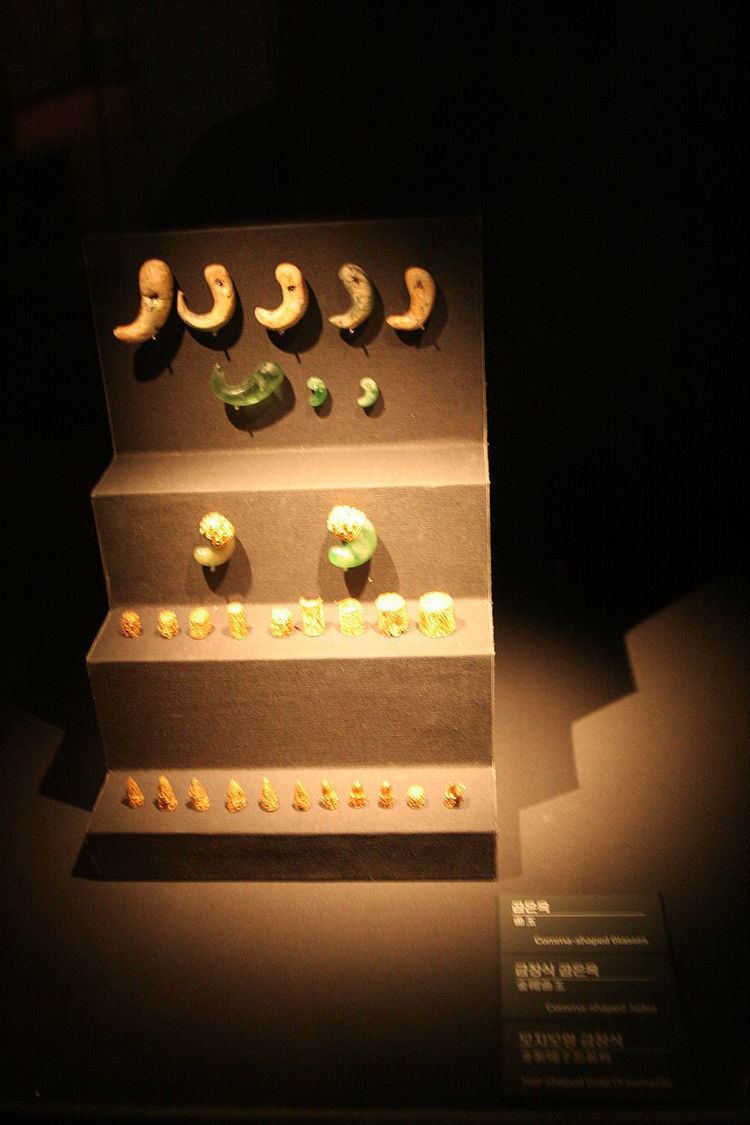Hangul 곱은옥 or 곡옥 Revised Romanization gobeunok or gogok | Hanja 곱은玉 or 曲玉 McCune–Reischauer kobǔnok or kokok | |
 | ||
Gobeunok or Gogok are comma-shaped or curved beads and jewels that appeared in prehistoric Korea through the Three Kingdoms period.
Contents
Details
Gogok is also sometimes romanized as "kogok" and "kokkok" or "kokok." They are also found in Siberia and Northeast Asia, but are most numerous in Japan (Magatama). Although usually made from jadeite which mined in Japan, they have been discovered made from many different materials such as nephrite, stone, clay, bone and glass. They range in size range from 1 to 10 cm, have a small hole in the middle of the round part for threading. Used as earrings and necklaces, and as decoration on crowns, belts, and bracelets. Some are further decorated with gold or silver attachments.
The curved nature of the gogok beads and their similarities to bear claws has led to a theory of Scytho-Siberian influence and origin created by bear totem tribes.
In Korea, jade gogok are found at prehistoric sites. Throughout the Korean peninsula, nephrite gogok are found inand Bronze Age sites in stone burial chambers (stone cists and dolmens). This probably indicates that gogok were symbols of prestige and power buried with the elites of society.
The most famous examples of gogok in Korean art are from the Three Kingdoms period, in Silla royal crowns, earrings, necklaces, and belts. These treasures were found in the burial mounds and royal mausoleums of Silla, Baekje, and Gaya kings. The ornamental antlers and tree-like structures of the Silla crown and similarities of the crown with works from the Eurasian steppes and Afghanistan suggests vast networks of trade and also reinforces a Scytho-Siberian origin for gogok. They declined in use from about the middle of the 6th century.
Origin
The origin of gogok is contested by archaeologists because these jewels are common in Kofun tombs of Japan, where they are known as magatama. One archaeologist, James Keally, who believes gogok originated in Japan cites the fact that gogok have been reported in Jōmon sites in Tohoku as early as about 1000 BCE.
